Interview with Jesper Ingevaldsson from Shoegazing
2January 31, 2014 by Ville Raivio
VR: Your age and occupation?
Products from Pukimo Raivio
Ralph Lauren, Black Label suit, size 52EU
JI: I’m 29 years old, and work as Communications Manager for a maritime competence centre at the Chalmers University in Gothenburg, Sweden. On my free time I write Shoegazing, a Swedish shoe blog.
VR: Your educational background?
JI: I have a bachelor’s degree in Journalism, and have worked as a journalist for several years, the last four at the Swedish National Radio. I just recently switched to “the other side” and started working in communication.
VR: Have you any children or spouse and how do they relate to your shoe enthusiasm?
JI: Yeah, I have a three year old boy and a new kid incoming this summer. When I met my wife I was an indie-pop guy who wore slim jeans and Adidas Superstar II-sneakers all year round. She is still a bit confused about my switch in style, but it was more so the first years. Nowadays she mostly likes the new shoes I show her, I turned her to the good side. And she also has some quality footwear nowadays, and of course has realized that they are superior.
VR: …and your parent’s and siblings’ reactions back in the days?
JI: They know that when I get interested in something, I always go all in. But they think that I spend ridiculous amounts on shoes.
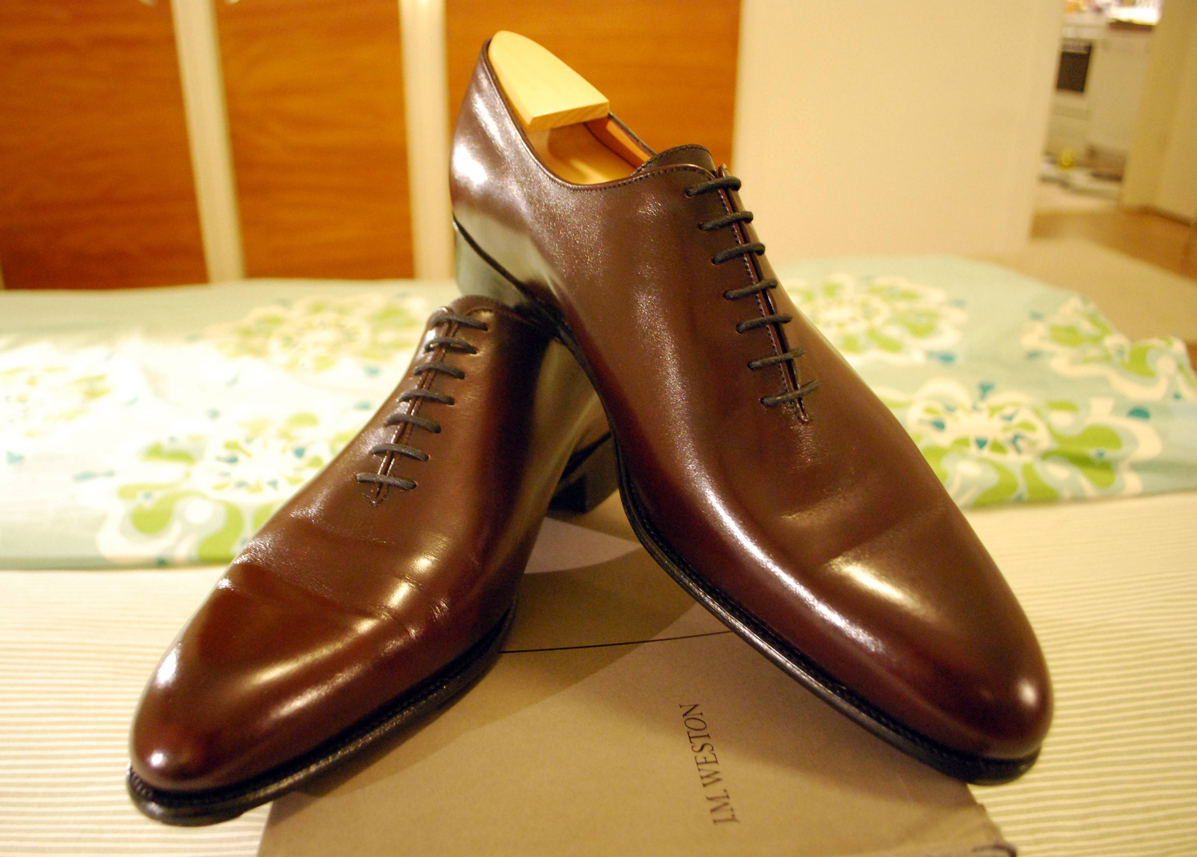 Rare seven eyelet model by J.M. Weston
Rare seven eyelet model by J.M. Weston
VR: What other hobbies or passions do you have besides footwear?
JI: The music is still with me, although to a much less extent. And I’m also very interested in sports, specifically bicycling. I was actually a professional cyclist in my youth. Went to a National sports college for bikers and was in the junior national teams in both mountain bike and road bike. After school I got signed by a professional road team and was a full time cyclist for a couple of years, but I had problems with bad blood values and was ill a lot, so at the age of 21 I quit the athletic career.
VR: How did you first become interested in clothes, and when did you turn your eyes towards classic shoemaking? Why these instead of fashion shoes?
JI: As mentioned, I was everything but a style aficionado back in the days. Had started to wear more “grown up”-clothes though and about six years ago I bought a classic wool overcoat which I really loved, and suddenly started to hang out on classic style pages like Manolo.se and other Swedish style blogs. I wanted to try out a pair of Goodyear-welted shoes and bought a pair of Loake 1880s from Pediwear. I remember thinking that £170 was a lot of money for a pair of shoes, but I immediately fell in love with the shoes, the feel of them, and since then I haven’t bought anything else than traditionally made quality footwear. It was especially the craft and the leather that draw me to it.
VR: How have you gathered your knowledge of apparel — from books, in-house training, workshops or somewhere else?
JI: From every possible resource I’ve found. I’ve read lots of books, everything from brief guides like A Guy’s Guide to Shoes over to more substantial pieces like Vass and Molnar’s Handmade Shoes for Men, and also books like Golding’s eight volume standard piece on how to make shoes (haven’t read it all though). I’ve talked to and spent time with cobblers and gotten to know bespoke shoemakers, and try to learn as much as possible from them. I read ridiculous amounts of forum threads, blogs and other online pieces. And of course, I’ve bought, used and cared for plenty of quality shoes.
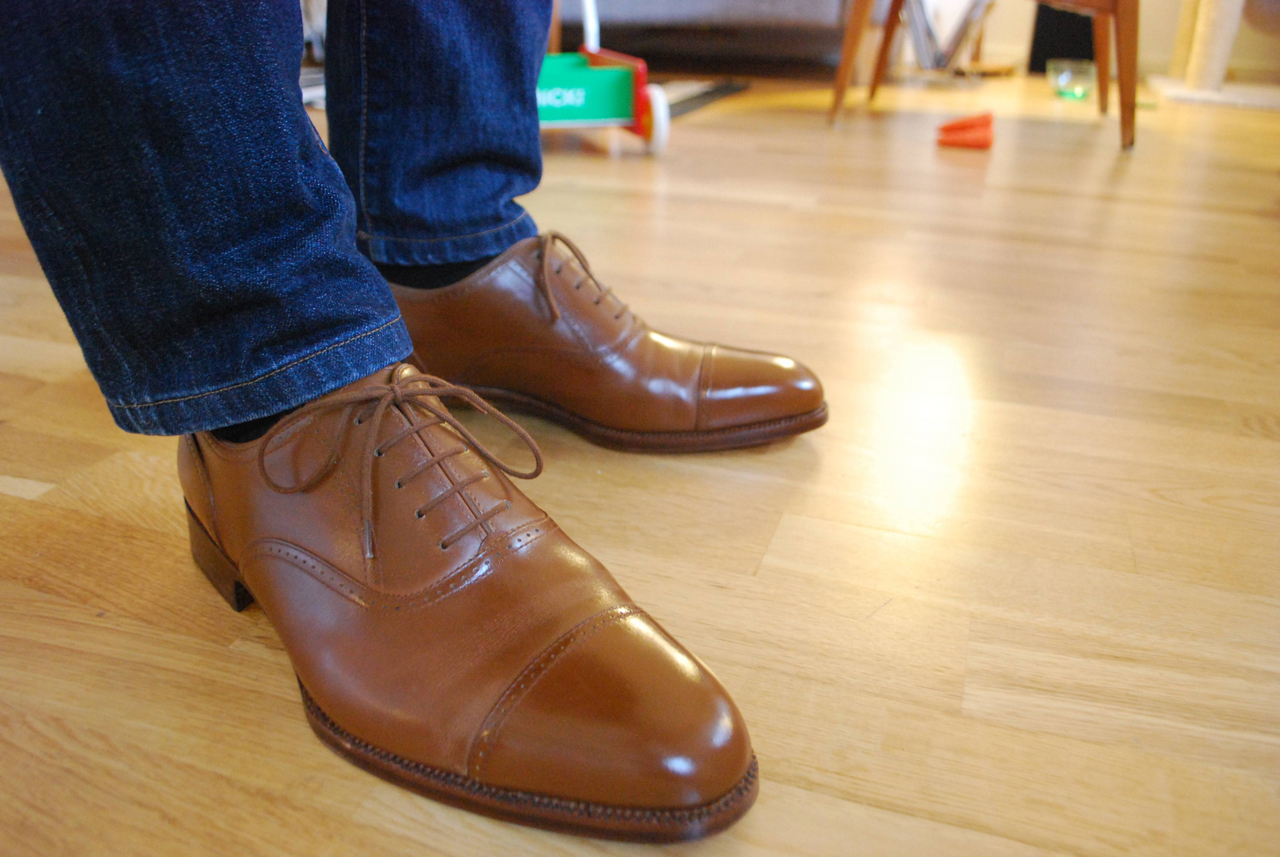 Long-distance bespoke kicks from Jan Kielman
Long-distance bespoke kicks from Jan Kielman
VR: When did you decide to set up Shoegazing and what’s your motivation for the blog? How do you select the content for the site, and what’s feedback been like so far?
JI: I wrote the first blog post about one year and four months ago, and since then I’ve written 160 articles. I missed a place which wrote about quality shoes often here in Sweden, and my wife had tried to convince me to start a blog for some time since she knew I had a lot of knowledge about shoes, and as a journalist could write well enough. So I thought, what the heck, I’ll give it a shot. And the response from my readers has been amazing, and that is the main reason why I enjoy it so much. They are very supportive, and I get asked a lot of questions in the comments sections, over mail and now since I started a forum in that. I have about 10 000 unique visitors a month, and nowadays they come from all over the world and use the translation tool on the blog, although of course Swedes are in a the majority.
I try to write about a broad range of subjects: buying guides, shoe care, about construction and leather, about the industry, factory visits and cobblers, reviews of shoes and much more. I often write pretty long articles, and the great thing is that my readers seem to love that. People often say that everyone wants short and fast info online, but we shouldn’t underestimate people’s interest in longer, in-depth articles as well.
It’s also pretty inspiring, and frightening, when you realize that you have a lot of influence through the blog. For example, since I wrote a buying guide to the brand Vass they sell a lot of shoes to Sweden, it’s now one of the countries that they do most direct sales to. After I wrote about sunken rubber toe taps I’ve been told by cobblers all around Sweden that they have seen plenty of men bringing in their shoes and ask for them to install it on their shoes. And when I wrote a report on a great cobbler in the small town Borås, he had customers from all over the south of Sweden visiting him with their shoes talking about that they read about him on the blog.
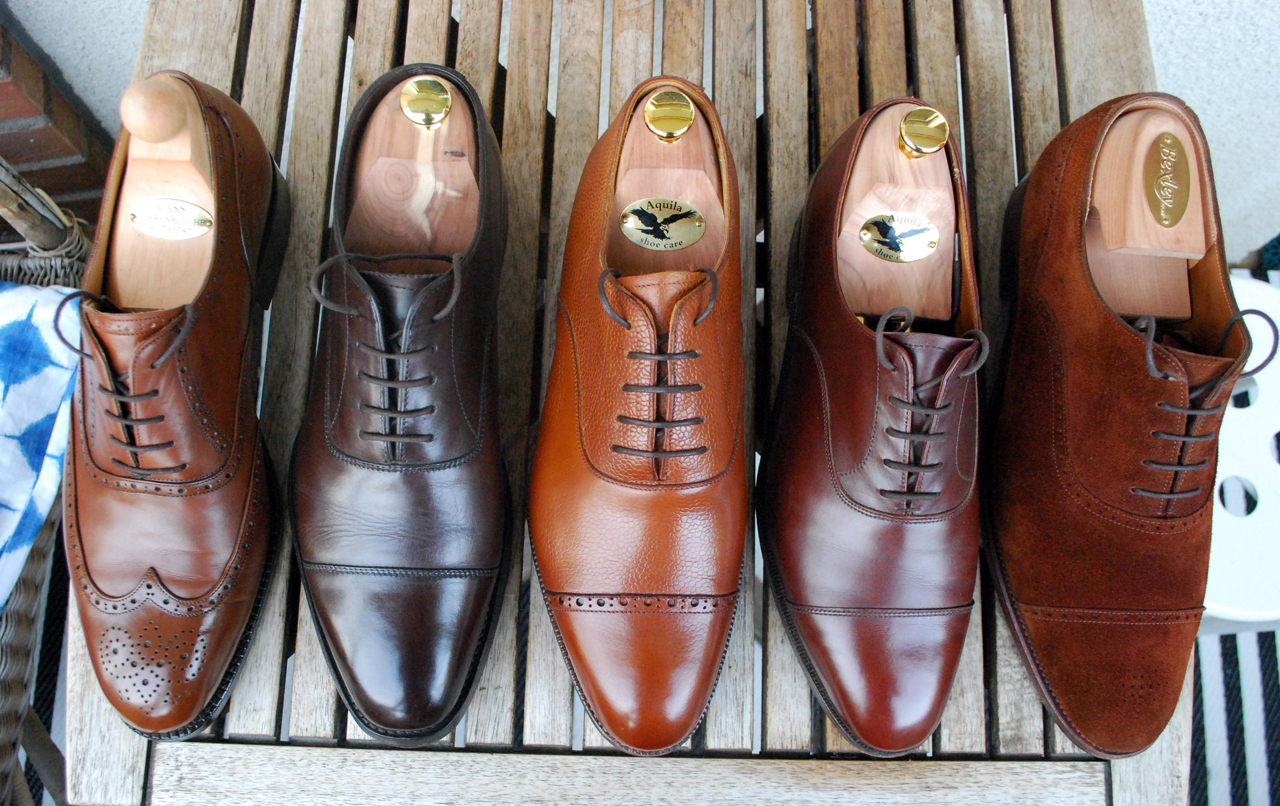 Last comparison from Shoegazing
Last comparison from Shoegazing
VR: How would you describe your own dress? Which RTW makers or tailors do you favour?
JI: I wear sort of a mix between Italian and English classic style. I like a pretty slim silhouette, but otherwise basic classical style with no large excesses. My standard outfit at work is odd pants, a single-buttoned jacket, shirt, tie and handkerchief. And of course, a pair of well-polished shoes. I like to support Swedish brands like Oscar Jacobson, Eton or Amanda Christensen, but brands that I like the most is for example Caruso, PT01 and Drake’s.
VR:…and the same questions regarding footwear. I’m sure you’ve tried and owned quite a number of shoes and must have favourites in each price point.
JI: Oh, this is hard. In the budget section I’d say Loake with their 1880-range. They offer good shoes at a great price, are classic and very solid in construction and quality check.
My favourite in the mid-range category would be Spanish Carmina, they came as a fresh new wind in the industry a couple of years ago and have achieved great things in short time. I like their lasts and styles, the quality is great for the price, and I also think that their business model, where stores mainly do their own make ups of the different models, is great and gives a lot of options for the customers.
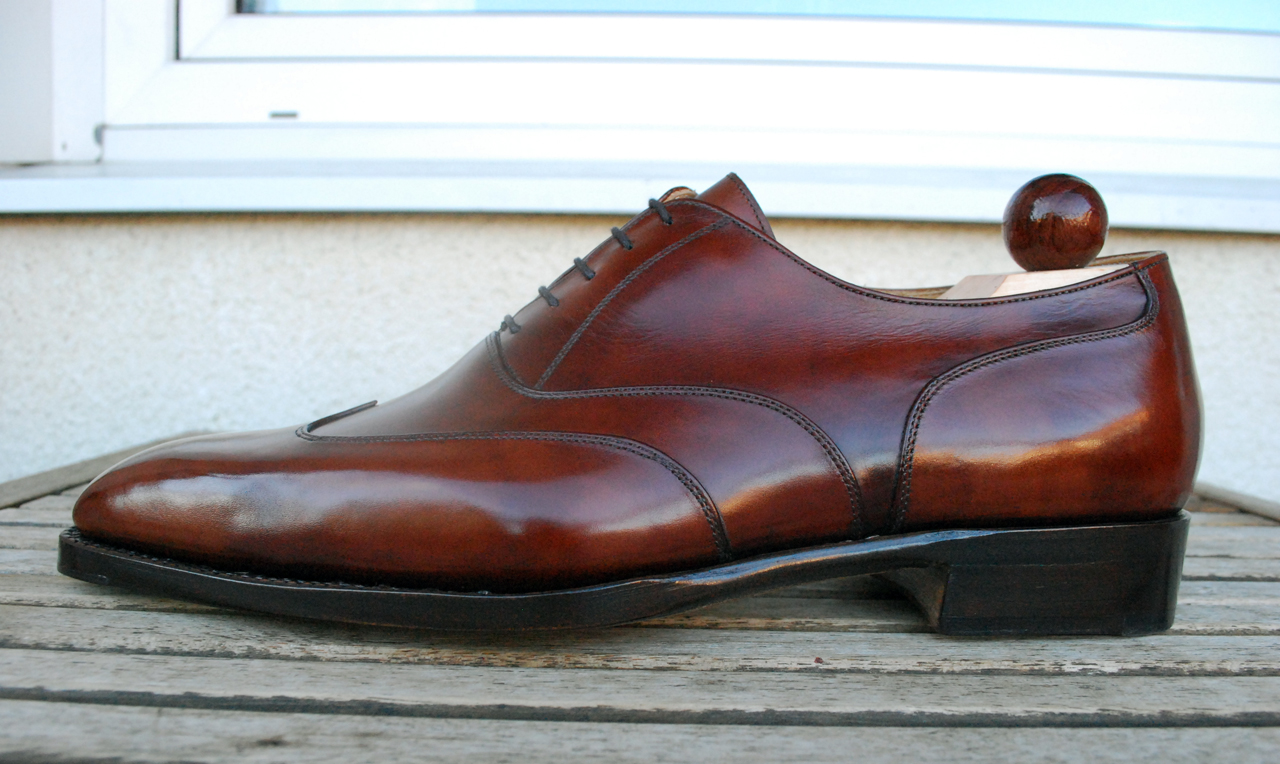 Clean lines that spell Vass, made from ILCEA’s fabled museum calf
Clean lines that spell Vass, made from ILCEA’s fabled museum calf
In the premium section I’d say it’s a tie between Gaziano & Girling and Riccardo Freccia Bestetti. G&G have amazing lasts and superb material, Bestetti makes incredible handmade footwear with unique lasts, and offers a superb semi-bespoke service.
Last but not least, I have to say that the brand that offers most value for money in the world would without a doubt be the Hungarian brand Vass. Completely handmade shoes with great materials, and both classic lasts as well as modern takes made by Roberto Ugolini, to a price that starts at just above 400 euros is almost too good to be true.
VR: Who or what inspires you?
JI: I’m inspired by people who are true craftsmen. All the amazing bespoke shoemakers out there in the world, everyone from the freelance closer who works in a basement outside of London to Japanese makers who spend 70 hour on one pair of shoes just to make them perfect and end up almost losing money on the process. Tailors, who hand-stitch jackets, bespoke trouser makers like Ambrosi and so on. And my twin brother, who is a professional saddler and leather craftsman, who makes amazing things for me, like a completely hand-sewn briefcase and hand-stitched belts that seem to never come apart.
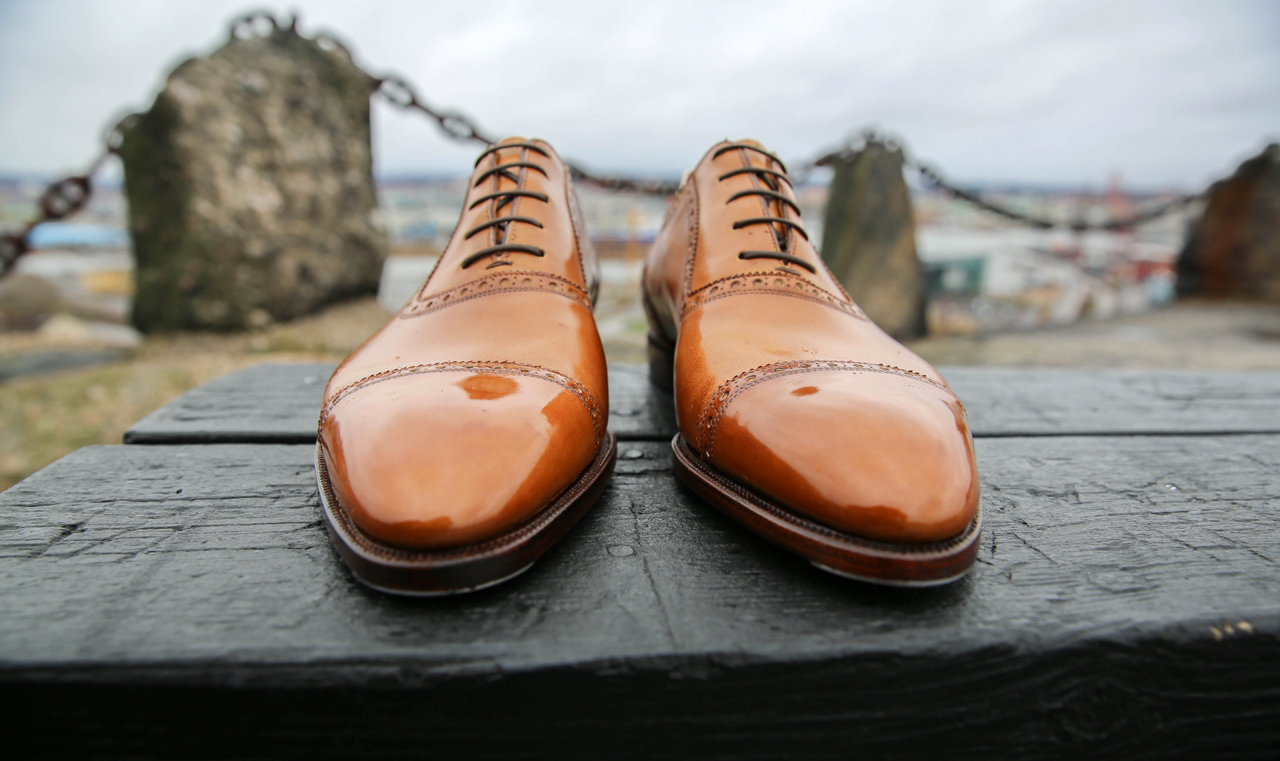 The sumptuous curves of Bestetti
The sumptuous curves of Bestetti
VR: What is your definition of style?
JI: For me style is when someone has thought his or hers outfit through very carefully, yet feels so comfortable in their clothes that they look like they walk around in their pajamas alone at home.
VR: Is there something you wish more men would know about shoes?
JI: Gosh, there’s so many things… But ok, apart from the obvious stuff, like don’t wear the same shoes two days in a row, use shoe trees, wipe or brush of your shoes after every wear, etc., I would like to discuss fit.
First of all, if you buy shoes online and haven’t tried them on before, don’t expect them to fit well. I always include one return for exchange in my budget for the purchase. And since it, in most cases, is a RTW-shoe on generic last, the chance for a really, really good fit is actually pretty low. But there’s a lot that can be done to improve fit of shoes that’s not quite there. You can fit heel or tongue pads (either stick-ons or have a cobbler do a more professional work with leather glued and sewn on), there’s plenty of different insole types, you can stretch the shoes up to one size in width (and pinpoint the places that need more space), and so on.
A good cobbler is your best friend here. Many people are so eager to use their new purchase right away that they settle for a decent fit instead of returning for a different size or taking them to a cobbler to do adjustments. It’s always worth the wait, trust me. I mean, what’s a week or two when quality shoes taken care for can be around for decades.
I also would like to address the fact that buying high quality, traditionally made shoes instead of glued crap is good in so many ways. You support workers who have relatively good wages and decent working conditions. You buy products that last a long time, which is much more sustainable and environmentally friendly than to toss and buy new ones all the time. You support good animal husbandry, since high quality leather comes from animals that have lived calm lives with much outdoor time in safe environments. And so on. The fact that quality shoes look and feel much better doesn’t make it worse.
Photos: J. Ingevaldsson
Category Bloggers, Interviews | Tags:

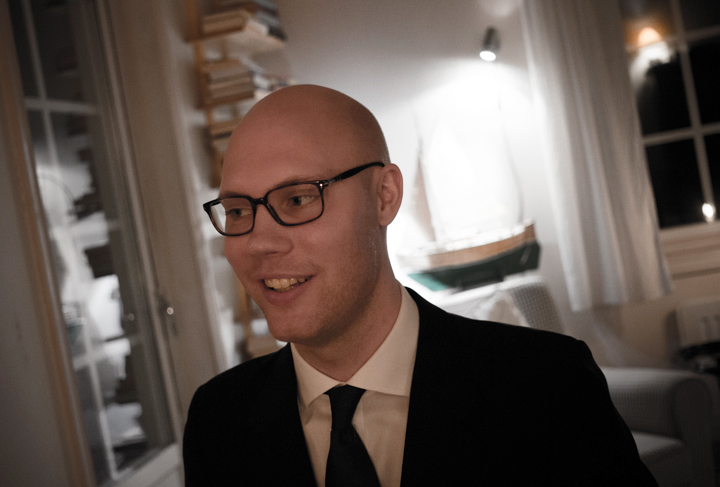
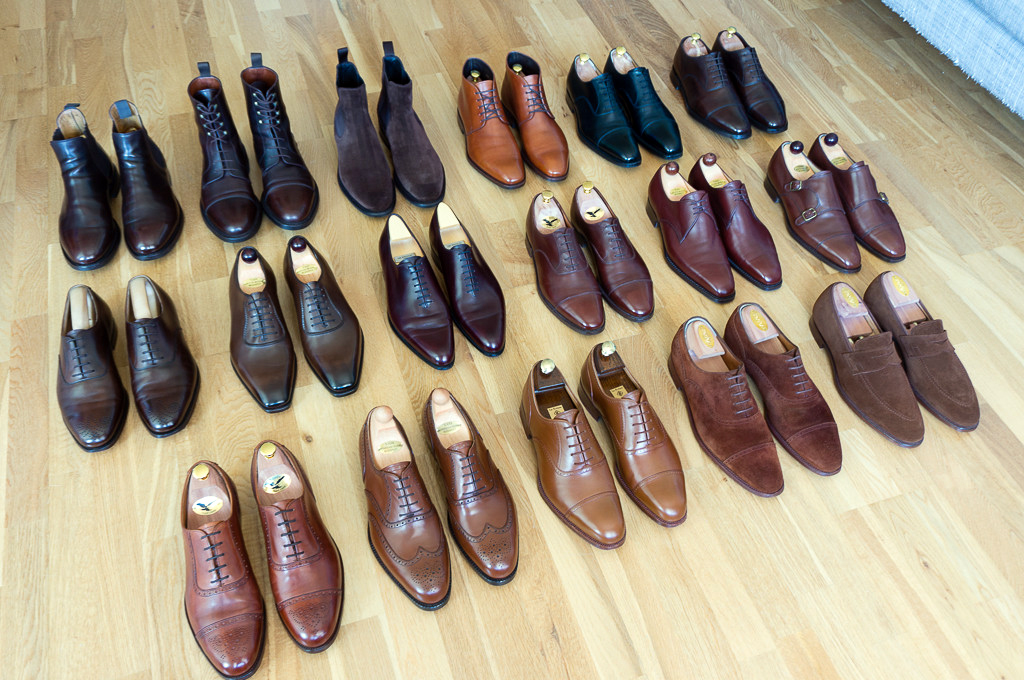


Interesting reading, as usual!
[…] Sedan då så har den mycket trevliga finlands/engelska-stilbloggen Keikari gjort en intervju med undertecknad. En ganska omfattande sådan, som kanske kan vara intressant att läsa. Om inte annat får ni se en bild på hur jag ser ut. Intervjun hittar ni här. […]